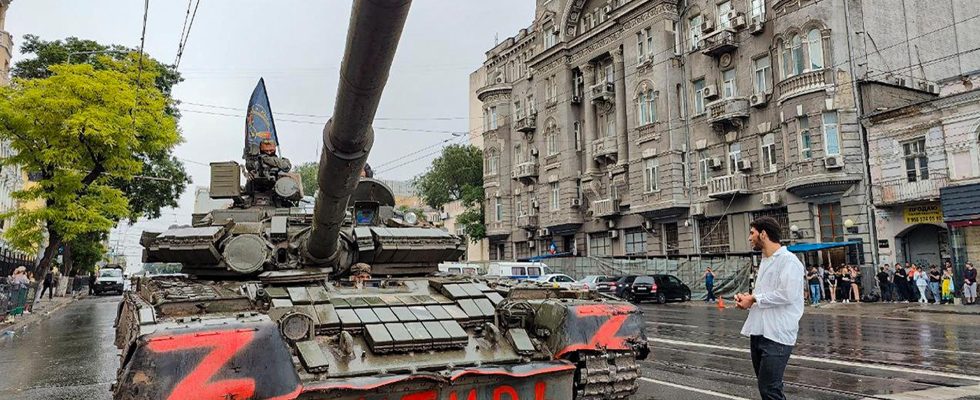An enraged mercenary commander left burning war behind and set off for Moscow with a retinue of tanks. Vladimir Putin sizzled about a treacherous stab in the back – but 20 miles outside Moscow everything stopped.
This has been happening since the Wagner group rebelled.
How did it start?
Late Friday night, Russian paramilitary Wagner group leader Yevgeny Prigozhin released several audio and video recordings in which he wildly accused the regular Russian military of shelling the group’s rear lines, resulting in a “huge number of casualties.”
A new level in an ever-escalating conflict between Wagner the top military leadership, headed by Defense Minister Sergei Shogyu and Chief of the General Staff Valery Gerasimov.
Then and there, Prigozhin said that he, with 25,000 Wagnerian soldiers, intended to launch a “march for justice” to take revenge on the top military officers – whom he accused of ordering the attack. However, Prigozhin emphasized that it was not a military coup.
The Russian security service FSB responded by opening a criminal investigation against Prigozhin for inciting armed rebellion.
Saturday morning:
Said and done. After bringing an unknown number of troops from Ukraine across the border into Russia overnight, Prigozhin announces that Wagner forces have captured the key hub of Rostov-on-Don and the headquarters of Russia’s Southern Military District located in the city.
According to Russian media, the National Guard’s special units are being put on high alert and security around Moscow is being increased. Motorways between southern and central Russia begin to be blocked.
Saturday morning:
Vladimir Putin gives a televised speech in which he condemns the Wagner uprising as “a knife in the back” and promises:
– Those who planned and organized an armed uprising, who took up arms against their brothers in arms, betrayed Russia. And they will have to answer for it.
New reports are pouring in that Wagner group forces have captured the town of Voronezh, north of Rostov-on-Don and just 50 miles south of Moscow. Wagner states that a Russian military helicopter has been shot down.
Saturday afternoon:
Local governors in several of the regions between Voronezh and Moscow announce that they are issuing travel restrictions and discouraging civilians from hitting the roads. In social media, unverified clips of backhoes digging large holes in the highway are being circulated.
The governor of Lipetsk, barely 40 miles south of Moscow as the crow flies, states on social media that the Wagner group’s convoy is moving through the region.
In Moscow, the mayor announces an anti-terrorist operation and decides to make Monday a non-working day to “minimize the risks”. Pictures show how battle defenses made of sandbags have been built on the outskirts of the city and how the roads are guarded by soldiers. Traffic in the city may be shut down, says the mayor.
Saturday night:
At 19:00, Swedish time, Prigozhin suddenly announces that the Wagner Group is ending its “march” and will turn back to Ukraine, according to his statement only 20 miles from Moscow.
He says he lets them turn to avoid “spilling Russian blood”.
At the same time, a press release comes from Belarus leader Aleksandr Lukashenko, who states that he has negotiated on Putin’s behalf – and that they reached an agreement.
Putin is said to have been informed of the negotiations, which took place during the day, and then thanked his Belarusian colleague and ally for his efforts.
At 21:30 there are reports that the forces of the Wagner Group have begun to leave Rostov-on-Don.
A little later, the Kremlin states that the investigation into the criminal suspicions against Prigozhin is closed. The decision means impunity for both Prigozhin and the soldiers who participated in the uprising.
